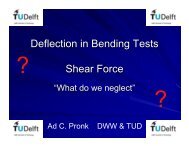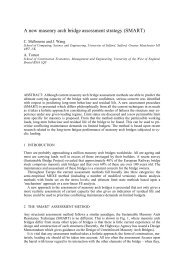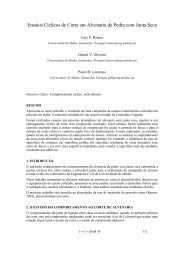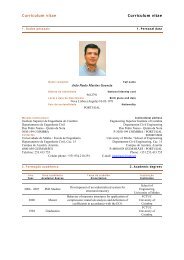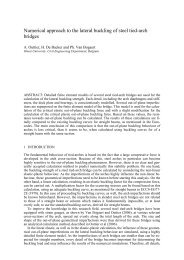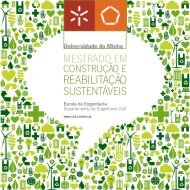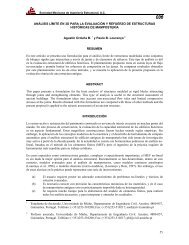Sustainable Construction A Life Cycle Approach in Engineering
Sustainable Construction A Life Cycle Approach in Engineering
Sustainable Construction A Life Cycle Approach in Engineering
Create successful ePaper yourself
Turn your PDF publications into a flip-book with our unique Google optimized e-Paper software.
However, the considered column resistance, 380 kN, is rather low for the design of effective<br />
concrete alternative. The expected load-bear<strong>in</strong>g capacity <strong>in</strong> the case of HPC and UHPC is significantly<br />
higher than <strong>in</strong> preset requirements def<strong>in</strong>ed for this study. The evident advantages of<br />
the use of high performance concrete would be more significant <strong>in</strong> the case of higher loads.<br />
6 CONCLUDING REMARKS<br />
First outcomes of a LCA for fibre re<strong>in</strong>forced wood profiles have been presented. They are<br />
mostly based on sophisticated data from the well-known eco<strong>in</strong>vent database. With the results<br />
from life cycle impact analysis environmentally sound process eng<strong>in</strong>eer<strong>in</strong>g can be developed.<br />
Two impact assessment methods have been applied whereas CML method seems to be more<br />
applicable for comparisons between products. For the steel and concrete alternatives published<br />
references were used.<br />
The prelim<strong>in</strong>ary study of the simple column design consider<strong>in</strong>g alternative solutions,<br />
three ma<strong>in</strong> build<strong>in</strong>g materials, consider<strong>in</strong>g environmental impact of the structural element<br />
illustrates importance and problems associated with this approach. The ma<strong>in</strong> conclusions<br />
are:<br />
<br />
<br />
<br />
More efforts should be put <strong>in</strong> the synchronization of the system boundaries for<br />
all alternative solutions.<br />
With the exist<strong>in</strong>g knowledge and tools available it is possible to def<strong>in</strong>e the<br />
best environmental and economical solution for a very specific build<strong>in</strong>g site<br />
conditions. However, these two separate criteria may be satisfied by different<br />
material solutions.<br />
It is important that design for the life time become the accepted approach despite<br />
of problems that are rather obvious. This will improve environmental<br />
awareness and certa<strong>in</strong>ly open new possibilities for <strong>in</strong>novative solutions <strong>in</strong><br />
construction sector, <strong>in</strong>creas<strong>in</strong>g variety of material choices and structural solutions.<br />
Comparable results of the analysis of three build<strong>in</strong>g materials are show <strong>in</strong> Table 10.<br />
Table 10. Comparison of basic categories of the environmental impact for alternative build<strong>in</strong>g materials<br />
Build<strong>in</strong>g material<br />
Performance<br />
Unit<br />
Timber<br />
(fibre re<strong>in</strong>forced)<br />
Steel RC hollow core<br />
weight kg 28.2 29.75 154.5<br />
energy MJ 140.7 723 328.8<br />
climate change kg CO 2 equiv. 0.40 32.2 32.5<br />
acidification kg SO 2 equiv. 0.19 0.12 0.13<br />
56


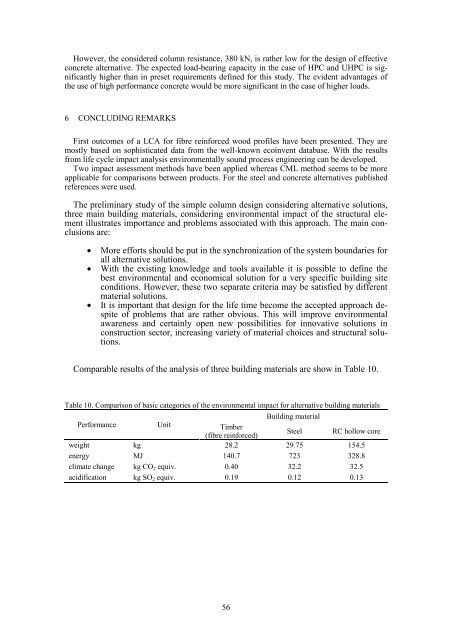
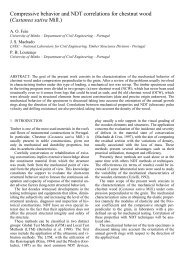
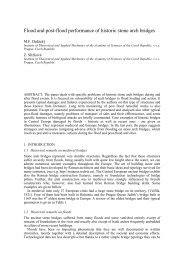
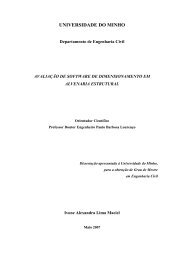
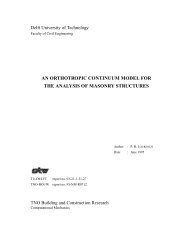

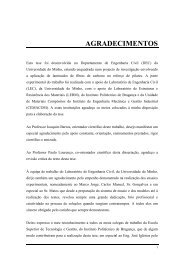

![Weibull [Compatibility Mode]](https://img.yumpu.com/48296360/1/190x134/weibull-compatibility-mode.jpg?quality=85)
